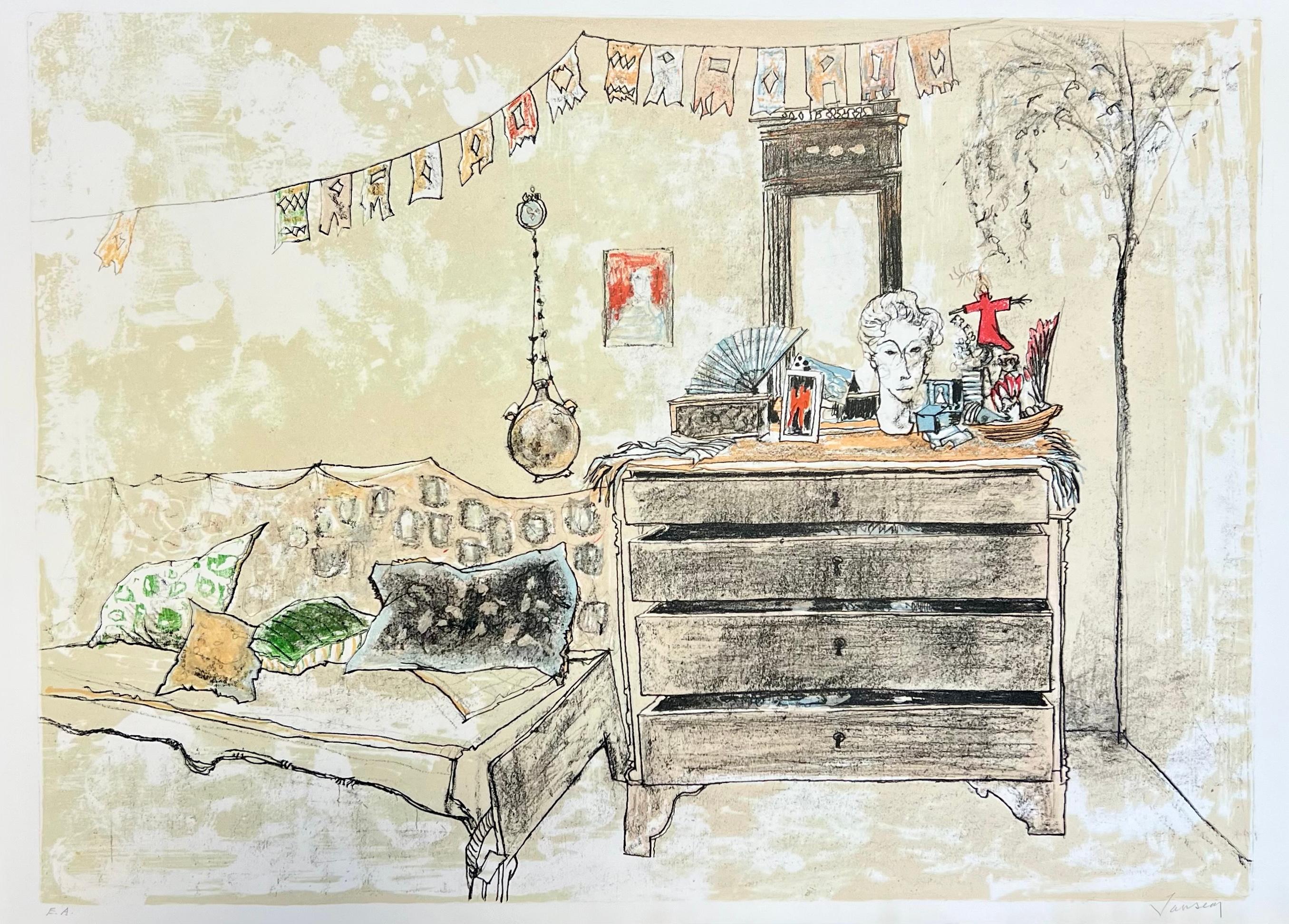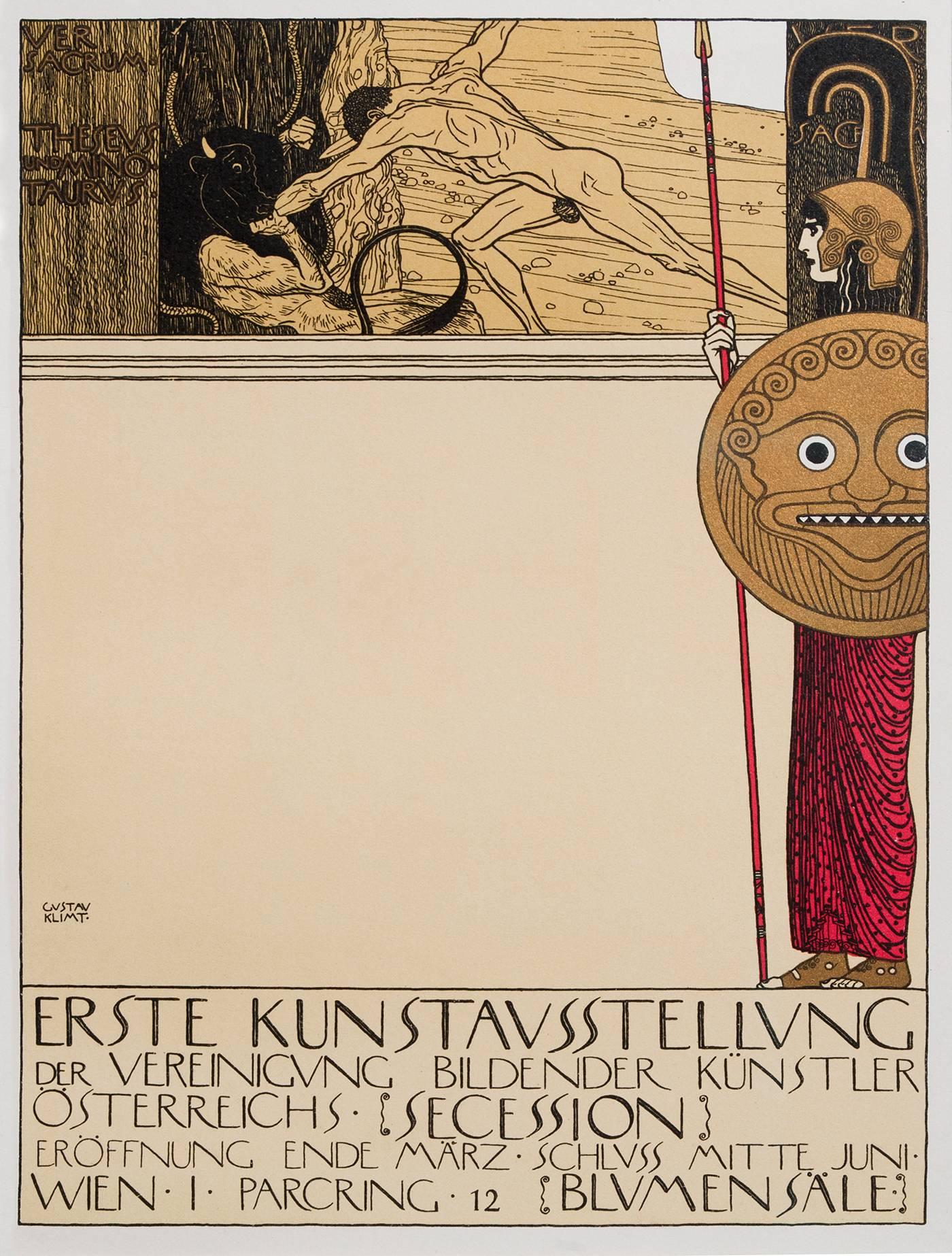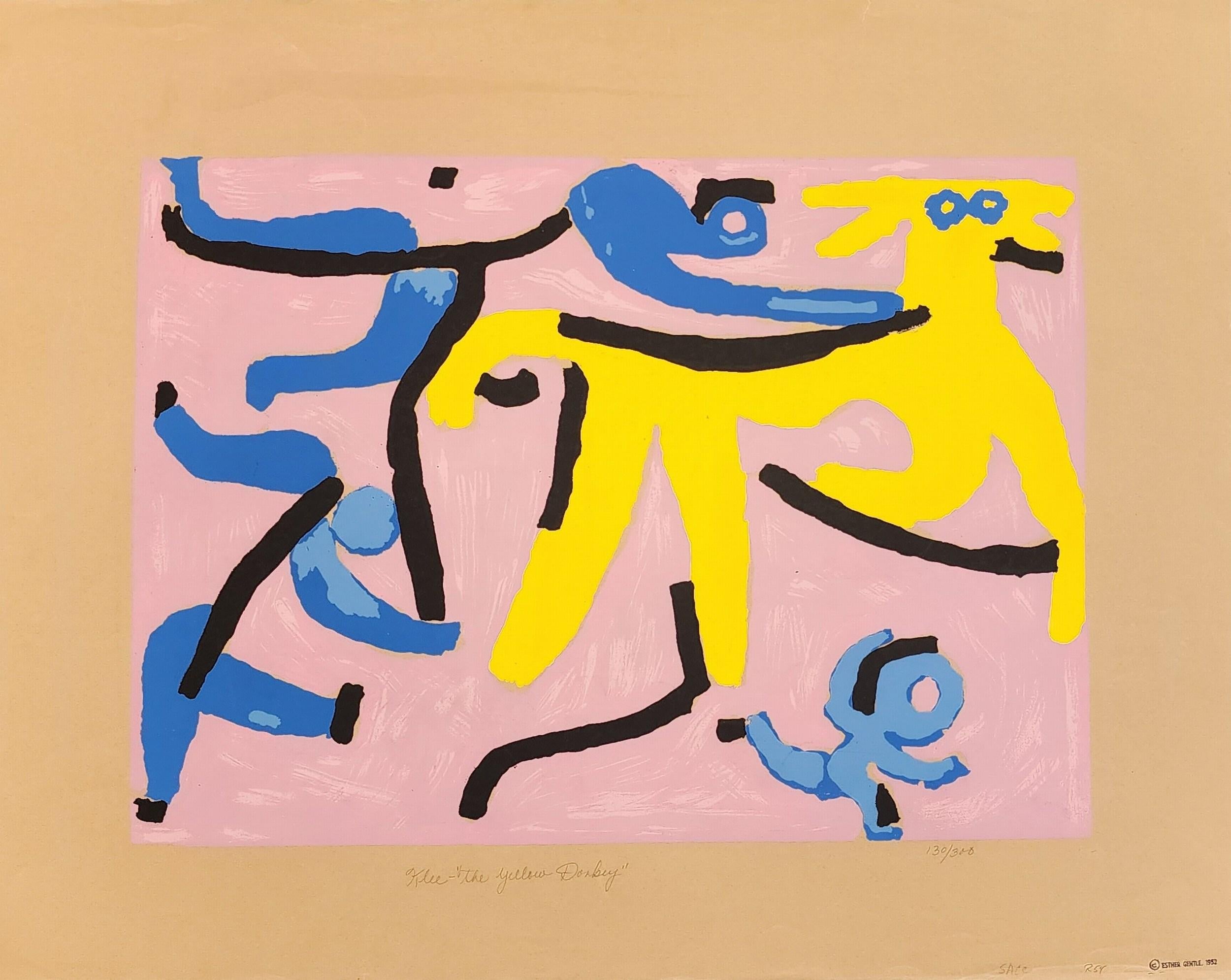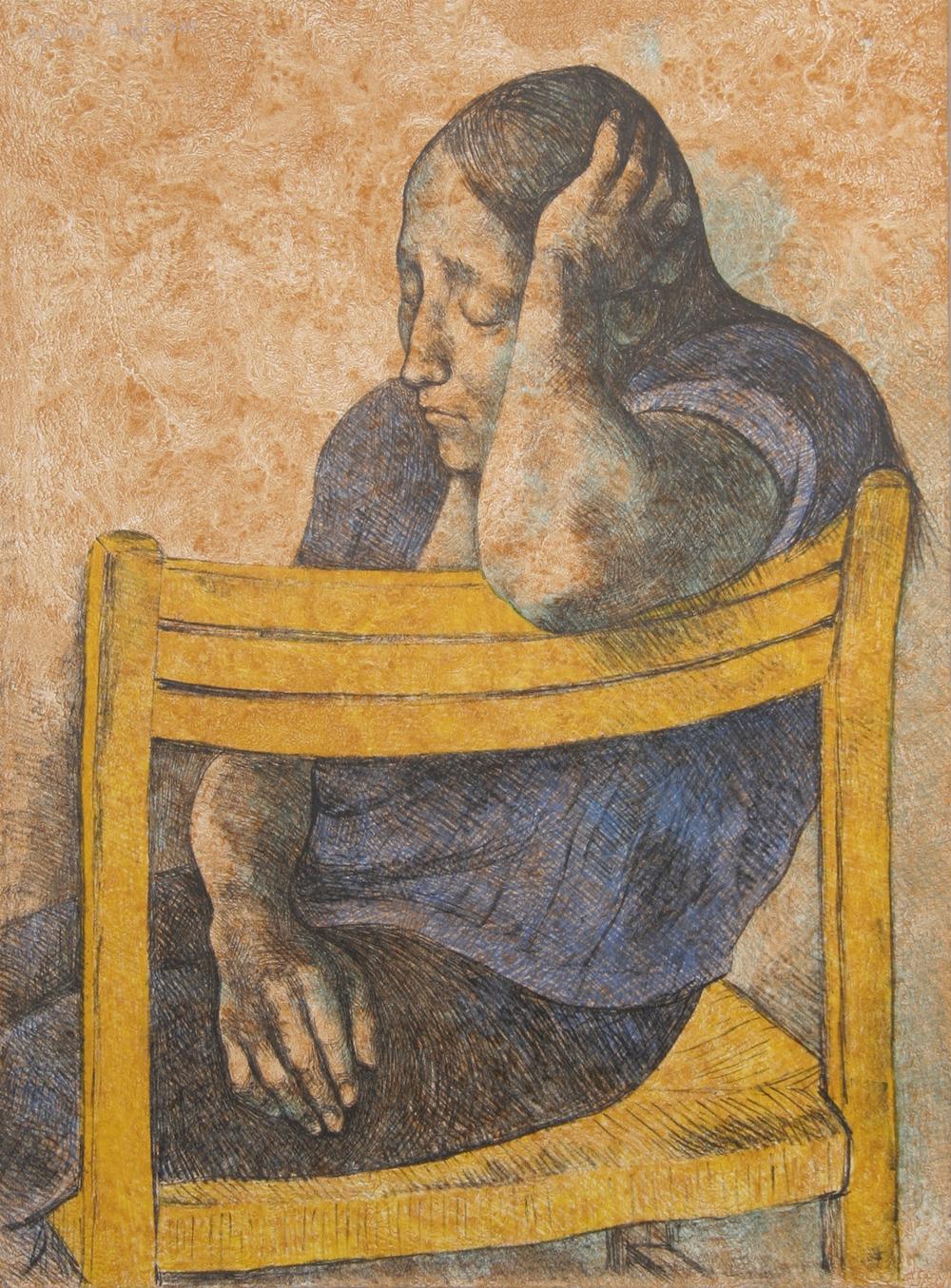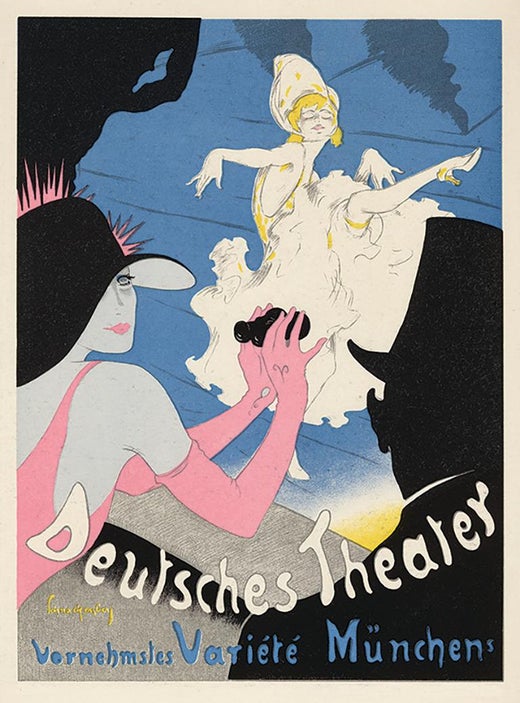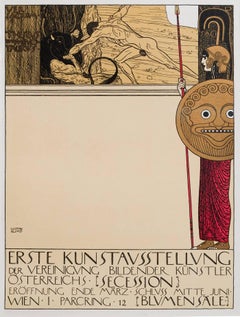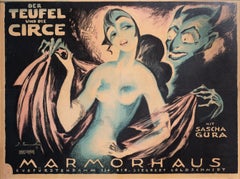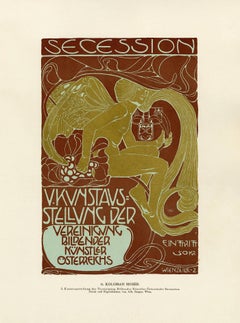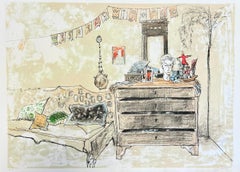Walter SchnackenbergKostume, Plakate, und Dekorationen, "Schlange (Snake)"1920
1920
About the Item
- Creator:Walter Schnackenberg (1880 - 1961, German)
- Creation Year:1920
- Dimensions:Height: 13.25 in (33.66 cm)Width: 9.25 in (23.5 cm)
- Medium:
- Movement & Style:
- Period:
- Condition:
- Gallery Location:Chicago, IL
- Reference Number:1stDibs: LU46731518063
Walter Schnackenberg
Walter Schnackenberg’s style changed several times during his long and successful career. Having studied in Munich, the artist traveled often to Paris where he fell under the spell of the Henri de Toulouse-Lautrec’s colorful and sensuous posters depicting theatrical and decadent subjects.
Schnackenberg became a regular contributor of similar compositions to the German magazines Jugend and Simplicissimus before devoting himself to the design of stage scenery and costumes. In the artist’s theatrical work, his mastery of form, ornamentation, and Orientalism became increasingly evident. He excelled at combining fluid Art Nouveau outlines, with spiky Expressionist passages, and the postures and patterns of the mysterious East.
In his later years, Schnackenberg explored the unconscious, using Surreal subject matter and paler colors that plainly portrayed dreams and visions, some imbued with political connotations. His drawings, illustrations, folio prints, and posters are highly sought today for their exceedingly imaginative qualities, enchanting subject matter, and arresting use of color.
Find Walter Schnackenberg art for sale on 1stDibs.
(Biography provided by Galerie Fledermaus)
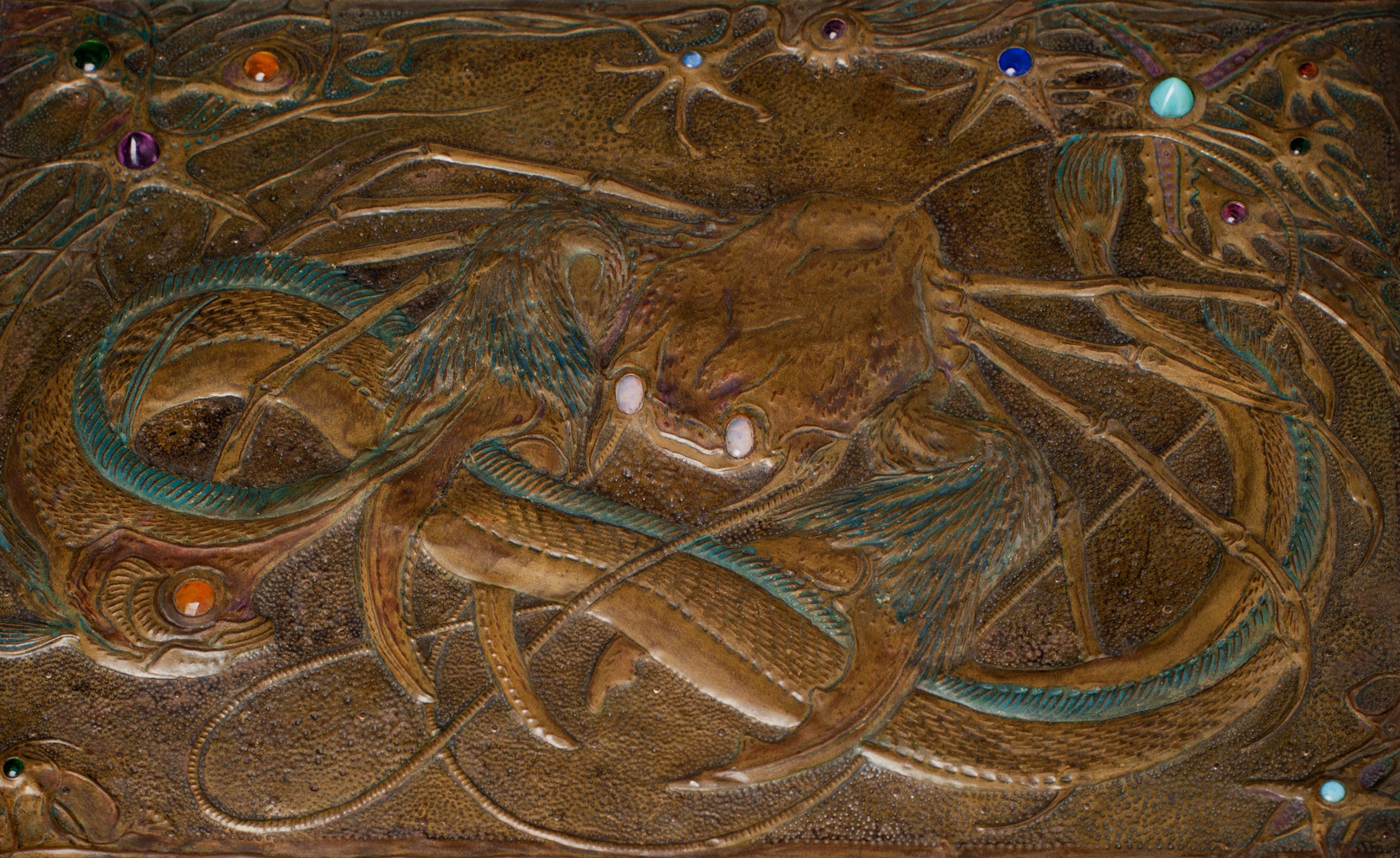
- ShippingRetrieving quote...Shipping from: Chicago, IL
- Return Policy
More From This Seller
View All1910s Vienna Secession Figurative Prints
Lithograph
1920s Expressionist Figurative Prints
Lithograph
1890s Vienna Secession Figurative Prints
Lithograph
1910s Vienna Secession Figurative Prints
Lithograph
1890s Vienna Secession Figurative Prints
Lithograph
1890s Vienna Secession Figurative Prints
Lithograph
You May Also Like
Late 20th Century Expressionist Figurative Prints
Lithograph
1930s Expressionist Figurative Prints
Lithograph
Mid-20th Century Expressionist Figurative Prints
Lithograph
1980s Expressionist Figurative Prints
Lithograph
1970s Expressionist Figurative Prints
Lithograph
1970s Expressionist Figurative Prints
Lithograph
